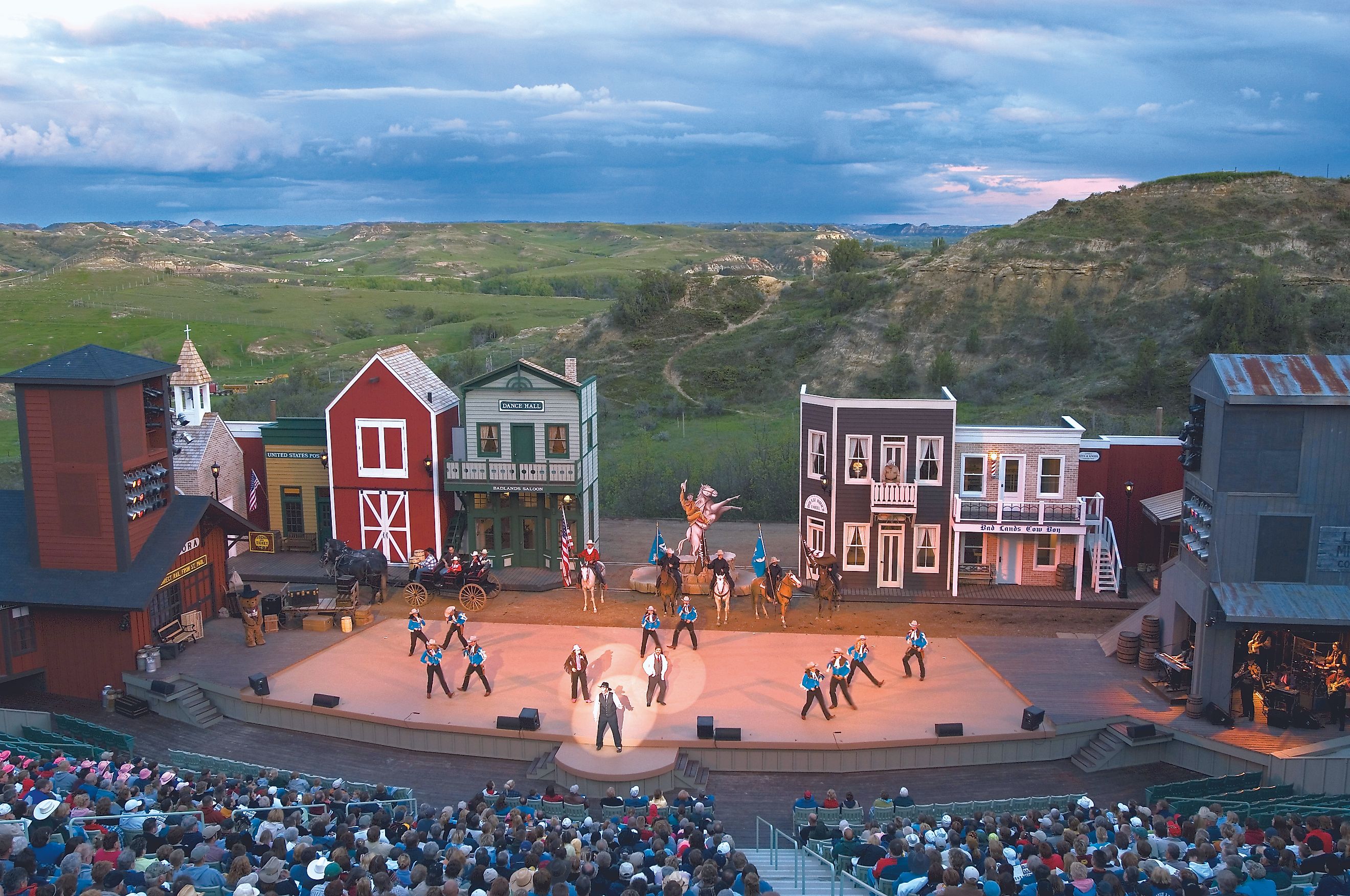
7 Timeless Towns In North Dakota
North Dakota, set on the American Plains and against the US border with Canada, conjures multiple images at once. It has welcomed strivers and romantics — not least. A young Theodore Roosevelt, whose North Dakota sojourn formed the foundation of his legend and legacy.
Admitted to the Union in 1889, following the US Civil War, the state's original motto—"Liberty and Union, Now and Forever, One and Inseparable"—recalls a time of national division. That conflict gave way to a long-standing chapter of peace in the country, and today, North Dakota enjoys a reputation as a quiet, safe place to live and visit. As these timeless towns show, North Dakota, also known as the Peace Garden State, has certainly earned its name.
Bottineau
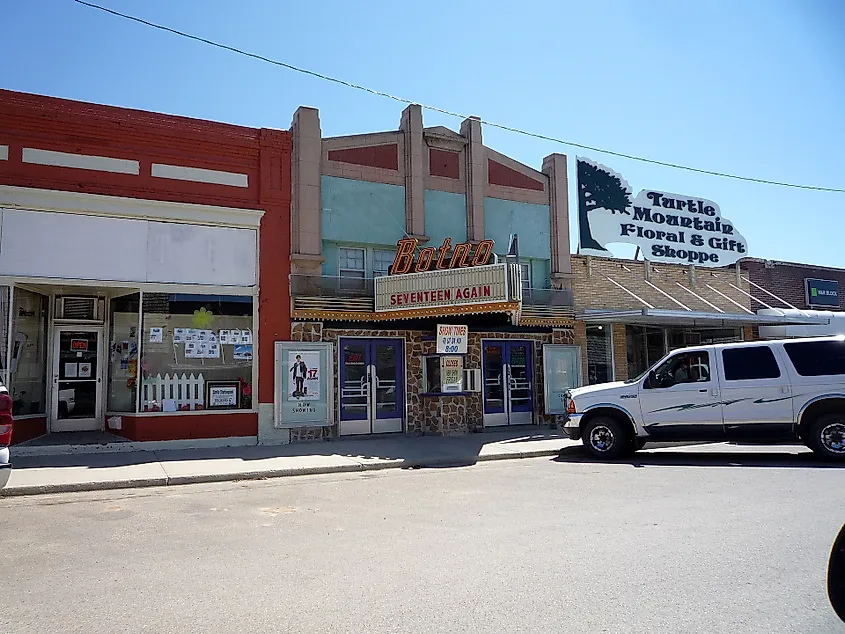
The north-central town of Bottineau, population 2,200, sits just below the Canadian border. Its French name reflects the one-time presence of French fur trappers and other traders, like its namesake, Pierre Bottineau. The town sits near the site of the International Peace Garden, a jointly-managed green space between Canada and the United States, offering attractions such as the Peace Chapel, the 9/11 Memorial, and the Conservatory featuring over 5,000 unique species of cacti and succulents.
Bottineau's other standout draws include an unusual figure in its Plains landscape: Tommy Turtle, actually a 30-foot statue of a turtle riding a snowmobile, and meant to symbolize the nearby Turtle Mountains. Home to Dakota College home to some 1,100 students, Bottineau features an outsized menu of local dining options, from fine dining at Marie's to the college-crowd favorite Denny's Pizza. The award-winning Pride Dairy sells ice cream for sweets fans of all ages.
Mandan
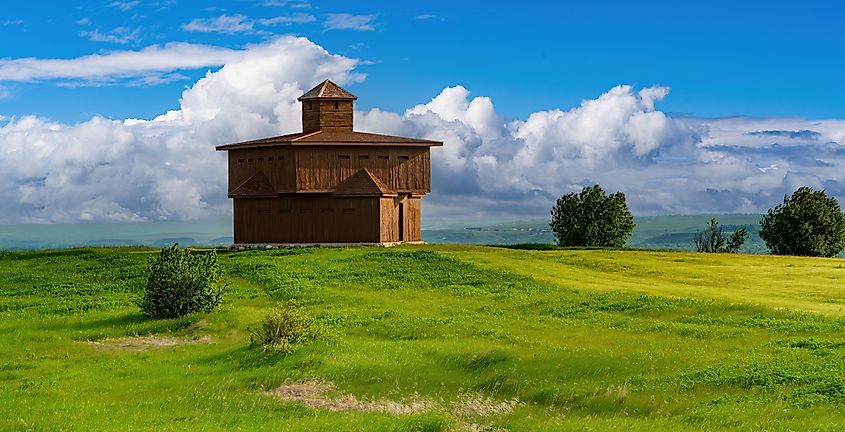
Mandan, a much larger town of 24,600, sits across the Missouri River from Bismarck, North Dakota's state capital, in the center of the state. Fort Abraham Lincoln State Park beckons the history buff with displays at its Visitor Center Museum that tells of North Dakota life from earlier times. Established in 1907, the park is North Dakota's first and has provided recreation and education for more than a century so far.
Mandan calls itself the "spirit of the West" in North Dakota. For a touch of that culture, check out the town in July during its Mandan Rodeo Days, a western-themed series each Independence Day weekend with bronco riding, art exhibits, a fireworks celebration, and a road race. Running for over 140 years, the Rodeo Days events draw crowds and repeat visitors from all over.
Medora
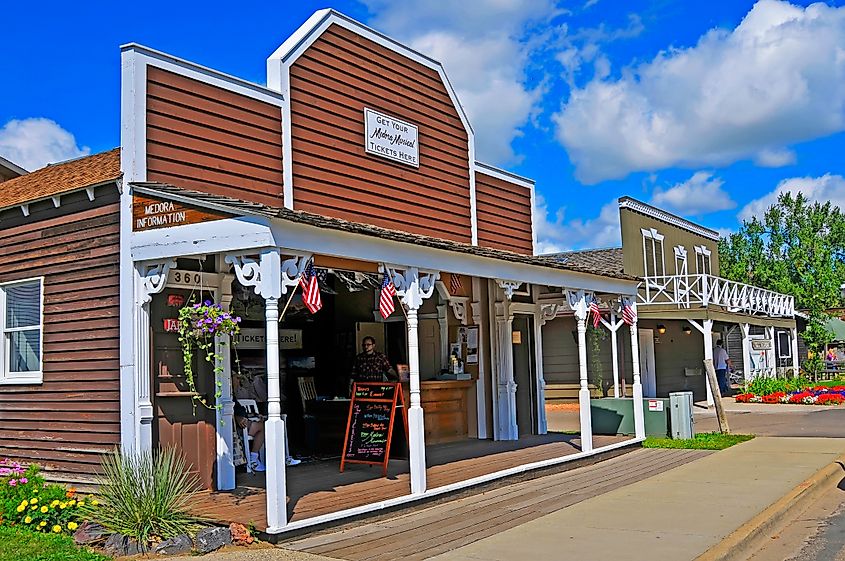
Medora, a map-dot with about 160 souls, lies in North Dakota's west and punches above its weight for small-town charms. Ringed by a picturesque half-canyon, the town provides a gateway to Theodore Roosevelt National Park and showcases the badlands that the future president fell in love with as a young man. Kids can channel Roosevelt's cowboy habits with horseback riding or family camping inside the park.
Grown-up Western enthusiasts can get a one-of-a-kind stay at the Rough Riders Hotel, a luxury Western accommodation that bears the name of the military unit that Roosevelt later rode to fame and political prominence. For more family-friendly fun, the Medora Musical, billed as "The Greatest Show in the West," offers a blend of country, pop, and other music styles for a memorable and musical western night out.
Rugby
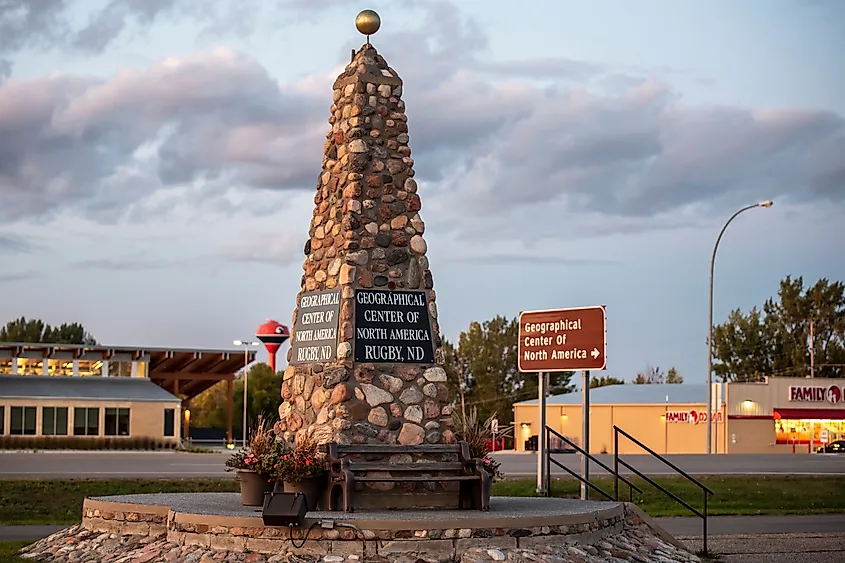
Rugby, with 2,400 inhabitants, makes an unusual claim to fame. The north-central town says it is the geographic center of the North American continent. A stone monument marks the claimed spot downtown. For a look back in time, the town's sprawling Prairie Village Museum provides information on early life in Rugby and historic North Dakota. The museum extends across more than 20 buildings and includes a school, a train depot, a jail, and even a log cabin dating from 1887.
Like its Canadian neighbor, Rugby welcomes tourists keen to see the aurora borealis—the phosphorescent northern lights that often play across the world's northern skies at night. The Northern Lights Tower stands nearly 90 feet high and serves as a lookout point for the sky's wild colors. An on-site interpretive center explains the phenomenon in detail.
Valley City
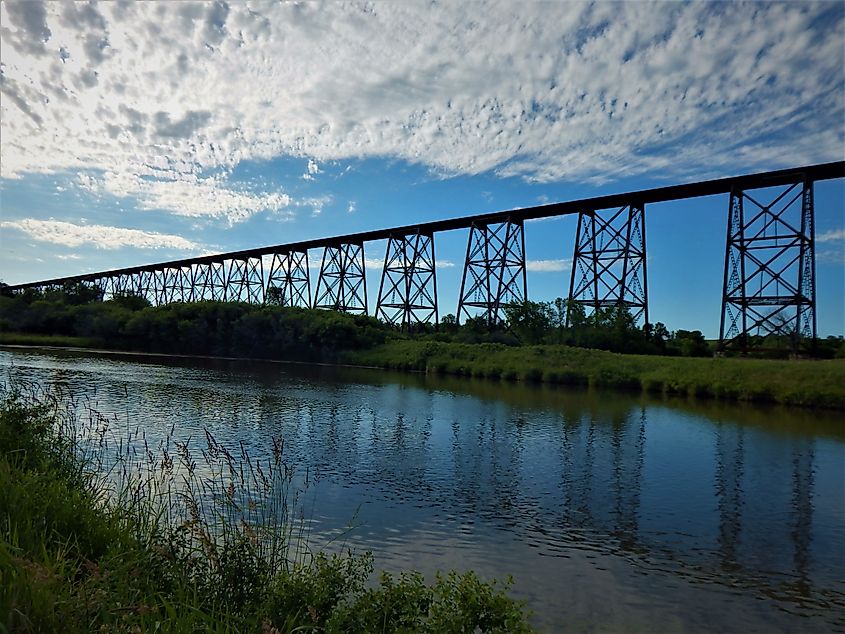
Valley City, actually a small town with a modest population of 6,600, lies west of Fargo, North Dakota's largest city. The place is also home to Valley City State University, whose student body of 1,700 gives a substantial boost to the town's economy and size. Calling itself the "City of Bridges," the place celebrates its many railroad suspensions and other constructions that span the Sheyenne River as it makes its many loops through town. The Native American West comes alive here at Medicine Wheel Park, which features a solar clock and a dozen earthen burial mounds.
For more time on the water, locals and visitors gravitate to Lake Ashtabula, a favorite spot for swimming, boating, and some classic American food options nearby. The Valley City State Planetarium provides otherwordly views to the sky beyond, making a great indoor alternative if the weather spoils plans to visit the town's bridges, waterways, or both.
Walhalla
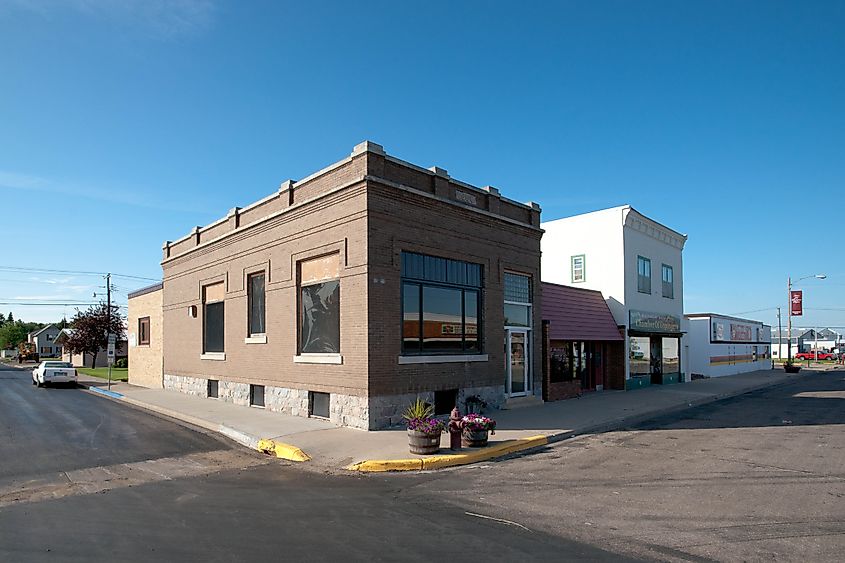
Walhalla, an early settlement in what was then the Dakota Territory, has a petite population of 900 today. Set in the state's northeast corner, just below the Canadian line, the town offers history and outdoor fun in equal abundance. The Gingras Trading Post, once a stop for trappers and their customers, has stood northeast of Walhalla since the 1840s and now exhibits the folkways of a bygone era.
The Pembina Gorge Recreation Area has wide-open spaces for hiking, cycling, and family outings. For wilderness, one can drive through the Rendezvous Region Scenic Backway, which holds fantastic views and scenes of North Dakota's rugged natural essence. The culture you can taste is on tap at the Howatt Hangar, within the local Frost Fire Park, while the same location puts on a summer theater series, with productions like the classic musical "Fame" and other shows available recently. Walhalla's small size does not prevent it from offering major attractions for locals and out-of-town tourists alike.
Williston
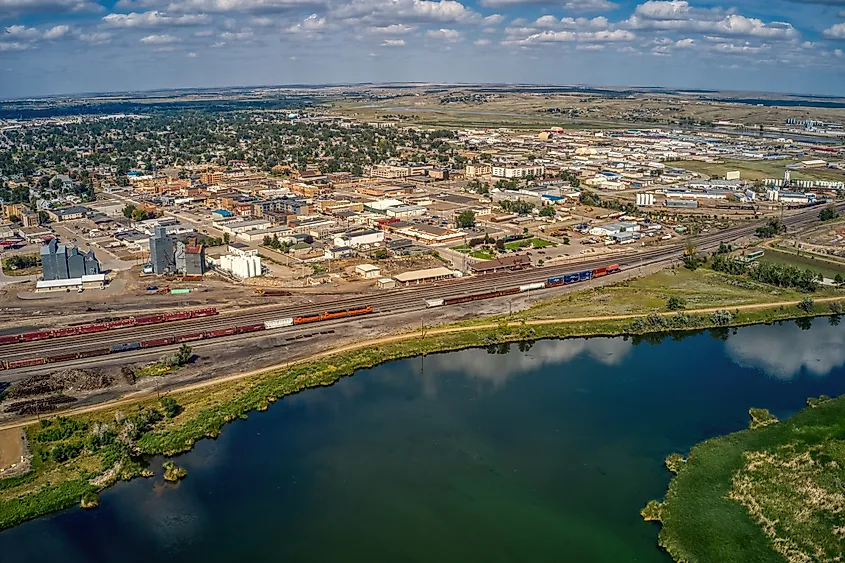
North of the Missouri River, Williston, with 27,700 people, offers a much larger slate of attractions to see and do. The northwestern town, well-known for its oil and gas activities, also promises fun for the outdoor sports fan, from golf and riverside walks to clay-pigeon shooting at the popular Painted Woods Sports Range. Clearly, Williston encourages a robust kind of active lifestyle.
For the culturally inclined, Williston made waves in a recent project that covered traffic signal cabinets with creative painting, thereby beautifying the town and its public spaces. Fans of Western movies, like the 2015 revenge thriller The Revenant, can retrace the steps of the real-life character Hugh Glass, who once worked as a hunter at nearby Fort Union. Today, the Fort Union Trading Post, a National Park Service site, tells of the days when the massive fort hosted a trade of 25,000 buffalo robes and early adventurers like Glass.
North Dakota's Towns: Where History Meets Scenic Beauty
With all that these and other North Dakota towns hold out for the visitor, it may seem surprising that the state's classic Western history and culture are not better known nationwide. Places like Bottineau and Williston speak to the old ways of fur trapping and trading. At the same time, modern cultural draws, like the stage productions at Medora and Walhalla, suggest an appetite for the lively arts and other creative expressions. No wonder the young Theodore Roosevelt came to love this state. North Dakota might be the next best place to explore for the traveler who seeks something timeless, fresh, and interesting.











